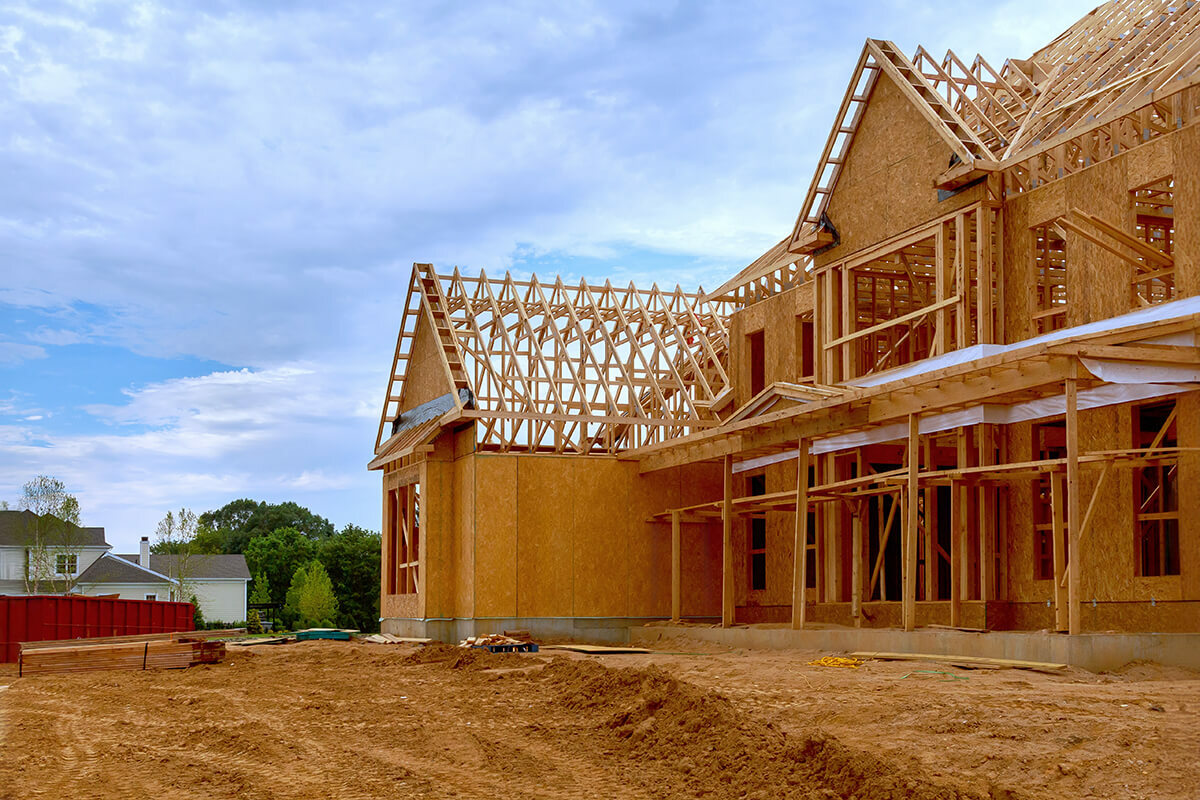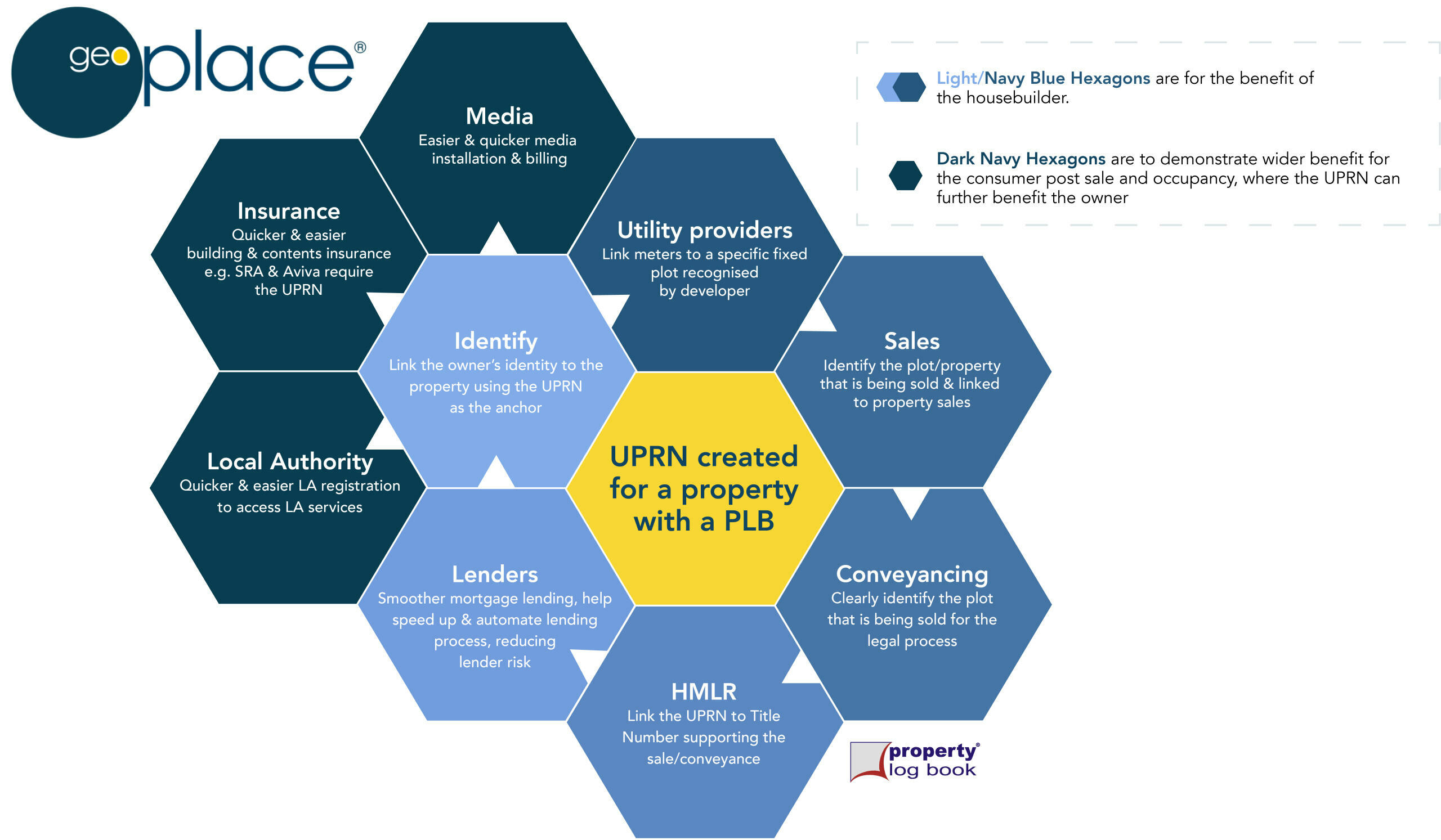The UK’s property market is the backbone of our economy, and there’s no doubt that its efficiency could be improved through comprehensive adoption of the Unique Property Reference Number (UPRN).

Already, UPRNs are starting to reshape how the industry approaches property identification, transaction, and management - and there’s significant, growing momentum for its adoption. This is exemplified by a new call at the end of last year from leading property sector organisations asking the Government to fully adopt the UPRN across the residential UK property market. You can see the letter in full, and its signatories here.
Unlocking value
HM Land Registry has long been the custodian of invaluable property data in the UK, holding the underlying, invaluable datasets that are crucial for all property transactions.
HMLR has been tasked with enabling greater adoption of UPRNs throughout the land and property market. In a recent letter from Matthew Pennycook MP, Minister of State (Housing, Communities and Local Government) to Neil Sachdev, Chair of HM Land Registry Board, the Minister noted:
"I am also very interested in making rapid progress towards enabling others to map HMLR data, for example by linking title numbers with INSPIRE IDs and UPRNs in published datasets”
This is part of a broader initiative to improve the speed and efficiency of property transactions, streamline conveyancing, and simplify planning procedures. Organisations such as the Home Buying and Selling Group now include a UPRN field on its Buying and Selling Property Information form, as does the Stamp Duty Land Tax (SDLT) return and the Law Society's LPE1, LPE2 and FME1 property forms, the independent professional body for solicitors in England and Wales, uses the UPRN in its TA6 Property Information Form which helps sellers gather and provide material information about a property for buyers and lenders.

The importance of linking HMLR’s title numbers with UPRNs and INSPIRE IDs cannot be over-emphasised – it’s one of the smoothest, most direct routes to enable more comprehensive mapping of property data, making it easier for different agencies and stakeholders to access the same information. This advancement is pivotal for the UK’s housing market as it moves to meet ambitious housing targets set by government.
By mapping HM Land Registry data to UPRNs, the efficiency of property buying, selling, and planning processes can be dramatically improved. As the entity responsible for managing UPRN data across local authorities, we’re an active advocate for this change.
A collaborative ecosystem
Orchestrating adoption requires the buy-in from a huge number of stakeholders. Collaboration exemplifies what’s possible through this kind of synergy – by working together, great things are possible.
At GeoPlace’s 2024 conference, Tom Treadwell, Senior Strategy Advisor at MHCLG, outlined how digitalising the property market can be speeded-up by using UPRNs. Projects like the Digital Planning initiative – aimed at speeding up development – or efforts to meet net zero targets by mapping energy-efficient homes all leverage UPRN-linked data. This built upon calls from Ministers from the previous government to ‘bake in’ UPRNs to streamline house buying and selling.
In support of the government’s 1.5 million homes goal, UPRNs will enable stakeholders to pinpoint suitable sites, track progress, and ensure new builds integrate seamlessly into existing datasets. As Andrew Trigg, Chief Geospatial & Data Officer, HM Land Registry blogged back on October 2022 "Interoperability is about making data work harder’, and the Government has asked HMLR to help make that happen"
Challenges and opportunities
However, if we’re pragmatic, then the way forward isn’t straightforward. Linking HMLR’s vast repository of title numbers – over 26 million – with UPRNs is not without its challenges and working through mapping out the differences between how land parcels are described versus how we record addresses against UPRNs. Whilst there may not be a 1:1 relationship in 100% of cases between the two there are some rules that can implemented to make the required data linkages meaningful to support the end to end use of the identifiers in the property transaction process. .
The opportunities, however, outweigh the challenges. A UPRN-enabled market could slash transaction costs, which would be a boon for first-time buyers and developers alike.
It could also accelerate planning approvals in support of housing targets, and enhance market resilience overall – extending the benefits to insurers assessing flood risks, for example, or to lenders in need of more efficiency in mortgage approvals – as explained by Robert Stevens, Head of Property Risk at Nationwide Building Society in the same session at the 2022 GeoPlace conference.
UPRNs are a catalyst, not a solution; but this is a sentiment HMLR is now tasked with turning into action.

Streamlining conveyancing and housing market efficiency
Data fragmentation has long been a barrier to smooth property transactions. UPRNs, however, provide a single reference point, cutting through this complexity and allowing for better data interoperability. The result is faster, cheaper property transactions that ultimately benefit homeowners, developers, and the entire market.
The Home Builders Federation and Etive are promoting a new customer identity verification and anti-money laundering standard which utilises UPRNs at its heart. By linking a certified customer’s identity to the property’s UPRN, the sales process can be made more secure and streamlined. Many mortgage lenders require a UPRN to provide a mortgage, so including this information can speed up the mortgage lending process. The UPRN can also be used by builders to link services, such as utilities, and other data, like an EPC, to the property.
Speaking at the 2024 GeoPlace conference, Beth Rudolf, Director of Delivery at the Conveyancing Association and Deputy Chair of the Home Buying and Selling Group (HBSG)The HBSG and Digital Property Market Steering Group (DPMSG) outlined the need for faster conveyancing. Buying a home is one of the most stressful life events, alongside death and divorce, with property transactions in England and Wales averaging 22 weeks. The lengthy process discourages lower-income buyers due to the risk of financial loss from fall-throughs and deters elderly homeowners from downsizing, limiting the availability of family homes. Additionally, legal regulations require all relevant material information to be included in property advertisements, emphasising the need for greater transparency and efficiency in the housing market.
Beth explained that UPRNs holds immense value for the property chain, in many different ways. In building safety, for example, there is a real issue that a landlord certificate and the leaseholder deed of certificate are not registered. But when a UPRN is attached to them - a conveyancer, a landlord, and a property manager can all have confidence in whether or not it is a qualifying lease, saying:
“We can increase Land Registry efficiency using the UPRN, enabling stakeholders to identify which properties all sit within the same estate, for example, using parent and child and sibling relationships. And by doing that, we can enable professionals to eliminate backlogs."
This is an area further explored by Twenty Convey in its recent article Could Widespread Use of the UPRN Speed Up Conveyancing?
NHBC has similar challenges; how to uniquely and accurately identify a home within NHBC’s data. Speaking at the 2024 GeoPlace conference, Anders Harrison, Data Consultancy Manager, NHBC emphasised that the early, authoritative identification of individual properties is essential for an efficient, low risk build process. It also paves the way for smooth, stress-free ownership and occupancy. By utilising UPRNs to identify properties housebuilders and could potentially drive improvements throughout the entire property lifecycle
GeoPlace is already working with property developers to explain how UPRNs are golden thread of property information to enhance efficiency, making it easier to find the information when needed through building, developing and selling.

We’re proud to be involved in pushing forward the agenda to streamline home buying and selling. Not only will it speed up property transactions, but it will also help address issues related to housing supply, planning, and development; the ability to track property data efficiently is crucial for ensuring new homes are built in the right places, that planning applications are processed more quickly, and that properties meet safety and environmental standards.
Private rented sector and social housing
It’s not just home buying and selling that can benefit from the inclusion of UPRNs in property related datasets.
A recent debate on Renters' Rights Bill and other existential issues facing the PRS industry called for:
"A more detailed property register, including something like the Unique Property Reference Number, could simplify compliance and help both landlords and tenants track key safety and legal details. This kind of transparency would be a win for the entire sector."
The Lettings Industry Council believes that UPRNs are a game changer for the lettings industry making the market safer for tenants and fairer for the vast majority of decent landlords and agents. In the same debate, Lord Best emphasised the potential for a more robust property register to enhance compliance and accountability in the private rented sector:
"The Lettings Industry Council is keen to see the property register, the data bank for property details, made something more substantial. It should include the unique property number for each place and information like electrical safety and gas safety. That would make a huge difference to tracking what's going on and ensuring compliance."
Based on a comprehensive survey of social housing providers, Housing Technology has published a new report Data Standards in Social Housing examining definitions, adoption, barriers, and resources for data standards. It also outlined the significant benefits of integrating UPRNs—such as enhanced data accuracy, streamlined regulatory reporting, and improved operational efficiency.
MHCLG is exploring solutions to the data challenges faced by the social housing sector. As part of this project, GeoPlace is working with MHCLG to develop guidance around the use of UPRNs in areas such as addresses in a hierarchy . what are non-postal addresses, local only records, categories for types of address/objects created.
Efficiency, effectiveness, transparency, accountability
The integration of UPRNs with other datasets will also improve transparency and accountability. From housing associations and local authorities to developers and insurers, all stakeholders will have access to reliable, up-to-date information. This should increase trust in property transactions and foster greater customer satisfaction, too.
As the UK moves toward a more digital and data-driven property sector, UPRNs will play an essential role in this transformation. Widespread adoption is key to unlocking a more efficient, responsive, and sustainable market – it’s a fundamental shift that will improve the speed, cost, and accuracy of property transactions, while also fostering innovation in housing development and planning.



